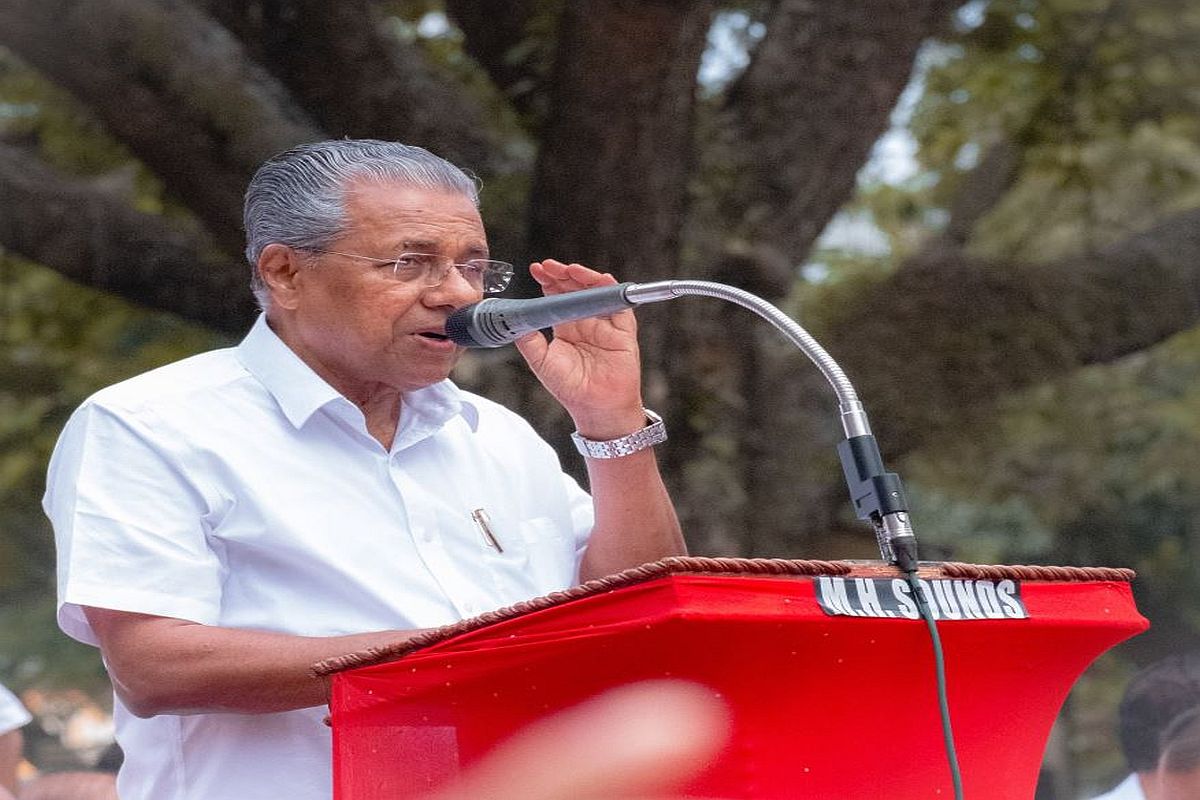Congress and CPM two sides of the same coin: PM Modi
Prime Minister Narendra Modi called the Congress and the CPI-M two sides of the same coin who engage in friendly competition in Kerala, yet remain partners in Delhi.
In forming the new Council of 21 Ministers, Vijayan chose 17 new faces from the CPI(M) and the CPI reciprocated by selecting four freshers.

Kerala Chief Minister Pinarayi Vijayan (Photo: Twitter | @vijayanpinarayi)
With the election of MB Rajesh of the CPI(M) as Speaker of the 15th Kerala Legislative Assembly with 96 votes against 40 of PC Vishnunath of the Congress on Tuesday, Pinarayi Vijayan began the historic second consecutive term of his Left Democratic Front government on a confident note, unmindful of the jinx that has visited every Kerala government with a massive legislative majority.
In the current 140-member Assembly, the CPI(M) boasts of 62 members and the CPI 17, making a total of 79. Minor alliance partners have added 20 to the kitty, taking the total to an unassailable 99. Therein lurks the danger. In 1967, after prolonged spells of President’s rule and continued political instability, legendary EMS Namboodiripad of the CPI(M) rustled up a seven-party United Front with the CPI and the Indian Union Muslim League among others and swept the polls with 113 seats in the 133-member House.
By the sheer weight of numbers the United Front crashed in less than two years. Similarly in the 1977 General Election held after the internal emergency when the Congress was getting wiped out in most of the States, the United Democratic Front led by the Congress swept the polls with 113 seats in the 140-member House. The original UDF was led by the CPI and included, other than the Congress, the Muslim League and the RSP.
Advertisement
Voted to power in 1970 with just 80 members, it stayed on in office for six and a half years, thanks to Indira Gandhi’s internal emergency. The UDF won 112 seats in the 140-member Assembly in 1977 and K Karunakaran of the Congress became the Chief Minister. He was forced to quit in three weeks. AK Antony who succeeded him lasted just one year, followed by PK Vasudevan Nair of the CPI. Before he could settle down, the CPI left the UDF to join the LDF and he resigned. Mohammad Koya of the Muslim League took over as Chief Minister. His government fell in two months.
The UDF voted in with such an overwhelming majority could not complete half its term. With the excessive reliance on veterans the CPI-M had frittered away its chances in West Bengal and Tripura. Learning from this experience, Vijayan evolved a strategy of denying tickets to those who had completed two terms or more as MLA.
By this decision veterans, including TM Thomas, popular finance minister, were kept out. In forming the new Council of 21 Ministers, Vijayan chose 17 new faces from the CPI(M) and the CPI reciprocated by selecting four freshers. Vijayan is the lone exception. He was under tremendous pressure to retain at least KK Shailaja, Health Minister, who had gained international acclaim for her handling first of the Nipah outbreak and then the Covid-19 pandemic.
There is no reason to believe Veena George, a former journalist chosen to succeed Shailaja, will not be able to tackle the problems as effectively as her predecessor. The central leadership may not be happy with the induction of Mohammed Riaz in the Council of Ministers simply because he is the son-in-law of Vijayan. His new team looks as promising as his first team.
Advertisement